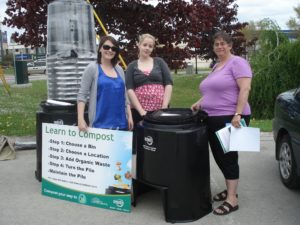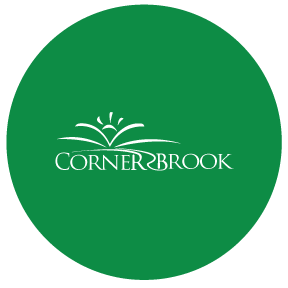Composting
Did you know that every day in Newfoundland and Labrador approximately 300 tonnes of organic kitchen and garden waste end up in our landfills?
Almost all of this can be diverted by composting.
Kitchen and yard waste can be easily turned into rich soil that will help gardens, lawns, and indoor plants grow. Composting is the natural decomposition of the material by providing ideal conditions for microorganisms to work. In just a few months, scraps become ready-to-use compost.
Why compost at home?
Types of composting
How do I get started?
What should I put into my backyard composter?
When is my compost ready?
Where can I get a composter?
More information…
Why Compost at Home?
- It is good for the environment
- It can reduce your waste by 25%
- It can give you a rich organic product to nourish your lawn and plants, which eliminates the need for fertilizer and reduces watering needs
- It requires very little work and time
- It is inexpensive
- It is easy to do
Types of Composting
There are 3 different types of composting we can do at home:
Vermicomposting
- The use of earthworms (red wigglers or nightcrawlers) in a container to process kitchen waste
Container Composting
- Most common composting
- The use of plastic, wood, or wire screen containers
- Vented or closed
- The fastest type of composting
- MMSB containers
Trench Composting
- A trench is dug and filled with composting materials and covered with topsoil (commonly used for farming or areas where you have more space)
How Do I Get Started?
Don’t worry if you do not have a lot of materials in the beginning. Although a compost pile needs a certain amount of bulk to get working, you will soon be adding lots of material to the pile.
- Pick a convenient location that is partly sunny such as near your side or back door. If you don’t have outdoor space, you could use an indoor vermicomposter (description above).
- Turn the soil in the location where the compost bin will be placed.
- Cover the ground with a layer of small branches and then place the compost bin on top of the branches.
- Build your compost pile. Start by layering brown (e.g., yard material) and green (e.g. kitchen scraps) materials. Begin with a layer of browns, then add a layer of greens, finish by covering with a layer of browns ensuring that the materials are fairly evenly balanced by weight. As you add to the pile throughout the season, continue alternating layers of browns and greens, always finishing with a layer of browns on top.
- Sprinkle with water, if necessary.
- Add a couple of shovels of soil, and mix everything.
TIP: if available, add some finished compost, garden soil, or a compost starter to the pile. This helps speed up the start of the composting process.
What Should I Put Into My Backyard Composter?
There are only a few essential components for successful compost:
- Food
Brown (pasta, bread, dry grass, leaves)
Green (fruit & vegetables, fresh grass clippings) - Water (damp to touch only, if you squeeze it and water comes out it is too wet)
- Oxygen (can aerate by turning the pile)
- Surface area (cut things like banana peels into smaller pieces)
| Add: |
Do not add: |
| fruit and vegetable scraps | pet manure or kitty litter |
| tea bags | meat, bones, or fat |
| eggshells, coffee grounds & filters | dairy products |
| nut shells | oil or oily foods |
| wood ash | diseased/bid-infested plants |
| plant trimmings | diapers or sanitary products |
| dry leaves | barbecue ashes |
| straw | eggs |
| wood chips/charcoal | fish and seafood |
| sawdust (in thin layers) | |
| dryer lint | |
| hair and fur |
When Is My Compost Ready?
Compost is finished when it looks soil-like and crumbly, with few identifiable lumps.
- Compost with some unfinished lumps is fine for use in your garden.
- Plan to harvest your compost twice a year
Where Can I Get a Composter?
Composters are available for purchase at City Hall. We have 8 available on a first come first serve basis. The cost for each bin is $44.95 +HST ($51.70).
You can also, purchase Composters at hardware stores, garden centres, and specialty stores. Call your local retailer to determine the availability of models, features, and prices.
For More Information
For more information about composting, please visit the Multi-Materials Stewardship Board’s website.
Check out the MMSB Complete Compost Guide.
Check out our composting brochure.



